Wall Insulation
Introduction
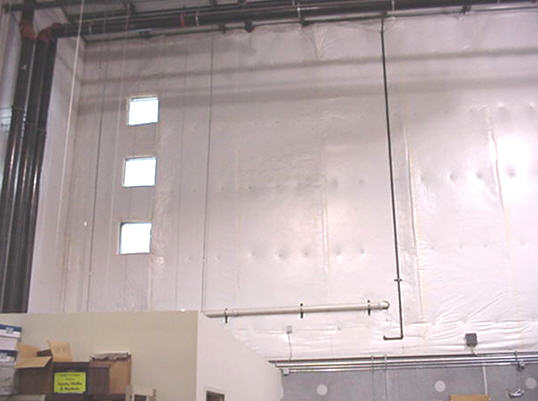
Wall insulation for non-residential facilities built with something other than frame walls, can be difficult to insulate.
Concrete block walls may have their cavities filled with pour-in vermiculite or perlite insulation at the time of construction; this does something to stop air circulation within the walls, but does very little to stop most heat loss.
Steel buildings are generally insulated with fiberglass batts at the time of construction.
Buildings of various construction are commonly faced with a foam and stucco exterior (such as the Dryvit system). Because the sub-surface material is foam, there is a fair amount of insulation advantage in this method. Concrete block walls can be insulated with spray-on foam on the exterior and then covered with steel siding. Both of these methods substantially improve the looks of the building and is often the primary driving factor.
Frame construction is insulated with fiberglass, cellulose or spray-in foam similar to residential construction.
One thing is common regardless of the method of construction – it is difficult and expensive to retrofit wall insulation in non-residential facilities.
Practices and Measures
- For un-insulated walls, consider options for retrofit addition of insulation; this is most practical to take place at the time of major renovation and facility use changes
- Caulk, plug and otherwise stop air leaks from cracks and penetrations through exterior walls
- Protect existing insulation from damage, repair any damages to insulation
Protect Insulation
One of the things that makes wall insulation so difficult is the necessity to protect it from damage. When insulation becomes damaged, wet, or allows air to circulate easily through it, its effectiveness is greatly reduced.
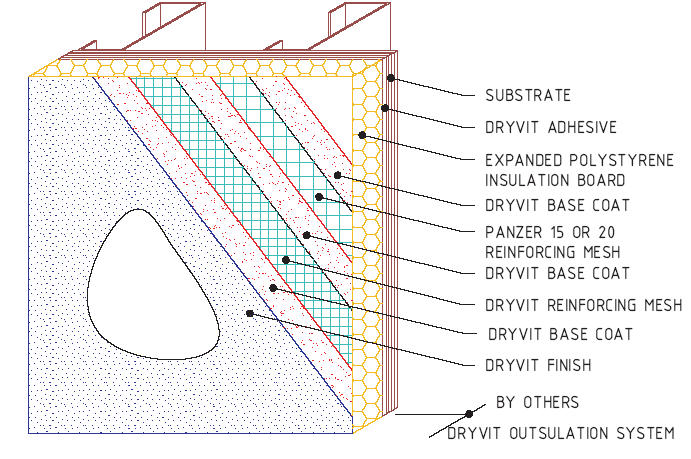
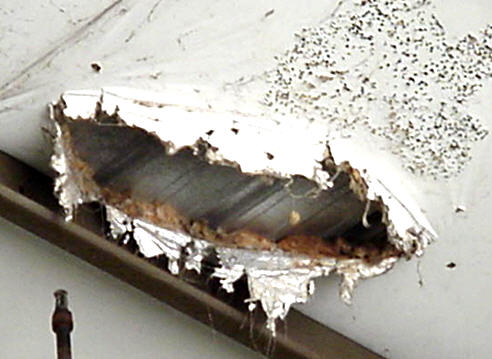
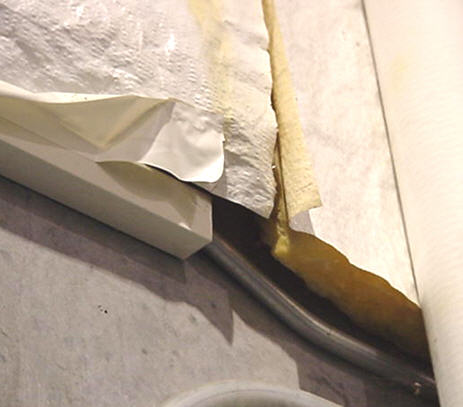 The Dryvit system uses external foam insulation covered by a stucco finish.
The Dryvit system uses external foam insulation covered by a stucco finish.
Masonry walls built in more than one layer are insulated between the layers using foam board or spray-in place foam.
Monoglass is a spray applied, non-combustible thermal and acoustic insulation material. Monoglass Insulation provides architects and building owners with a solution to difficult to insulate areas. Monoglass can be applied to concrete, steel, wood, glass, gypsum, fireproofing or other insulation materials. It can be sprayed to a depth of 5” / 125mm on to almost any surface configuration to achieve an R-20 without need for mechanical support.

Urethane foam sprayed onto concrete blocks before the finish brick is applied.
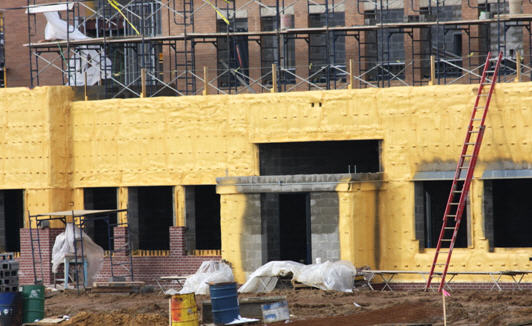 Polymaster foam being injected into a concrete block wall
Polymaster foam being injected into a concrete block wall
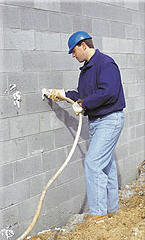
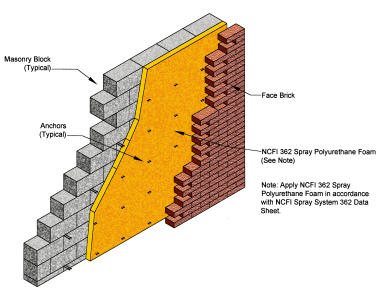
From the Monoglass web site:
More Information
Dryvit Systems, Inc.
One Energy Way
PO Box 1014
West Warwick, RI 02893
Telephone: 800-556-7752, 401-822-4100
Web site www.dryvit.com
Demilec (USA) (See web site for Canadian Office)
2925 Galleria Drive
Arlington, Texas 76011
Telephone: 817-640-4900
Web site www.heatloksoy.com
Monoglass Incorporated
430 North Tower
650 West 41st Avenue
Vancouver, British Columbia, Canada V5Z 2M9
Telephone: 604-261-7712
Web site www.monoglass.com
Polymaster
10523 Lexington Drive
Knoxville, Tennessee 37932
Telephone: 865-966-3005
Web site www.polymaster.com
Source: Text Bob Fegan 1/2009; photos by Bob Fegan; manufacturer illustrations and photos from the manufacturer’s web sites linked above 9/2005; revised 3/2008;
© 2008 Energy Solutions Center400 N. Capitol Street NWWashington, DC 20001 All rights reserved. Legal Contact our webmaster
